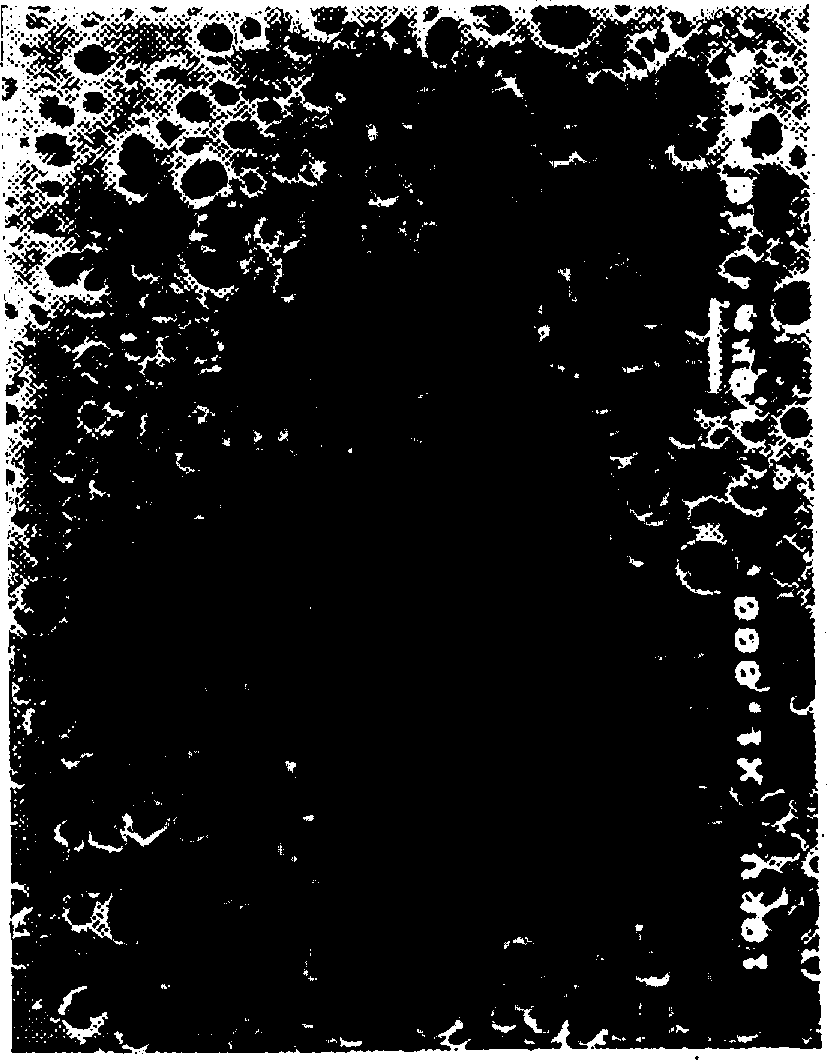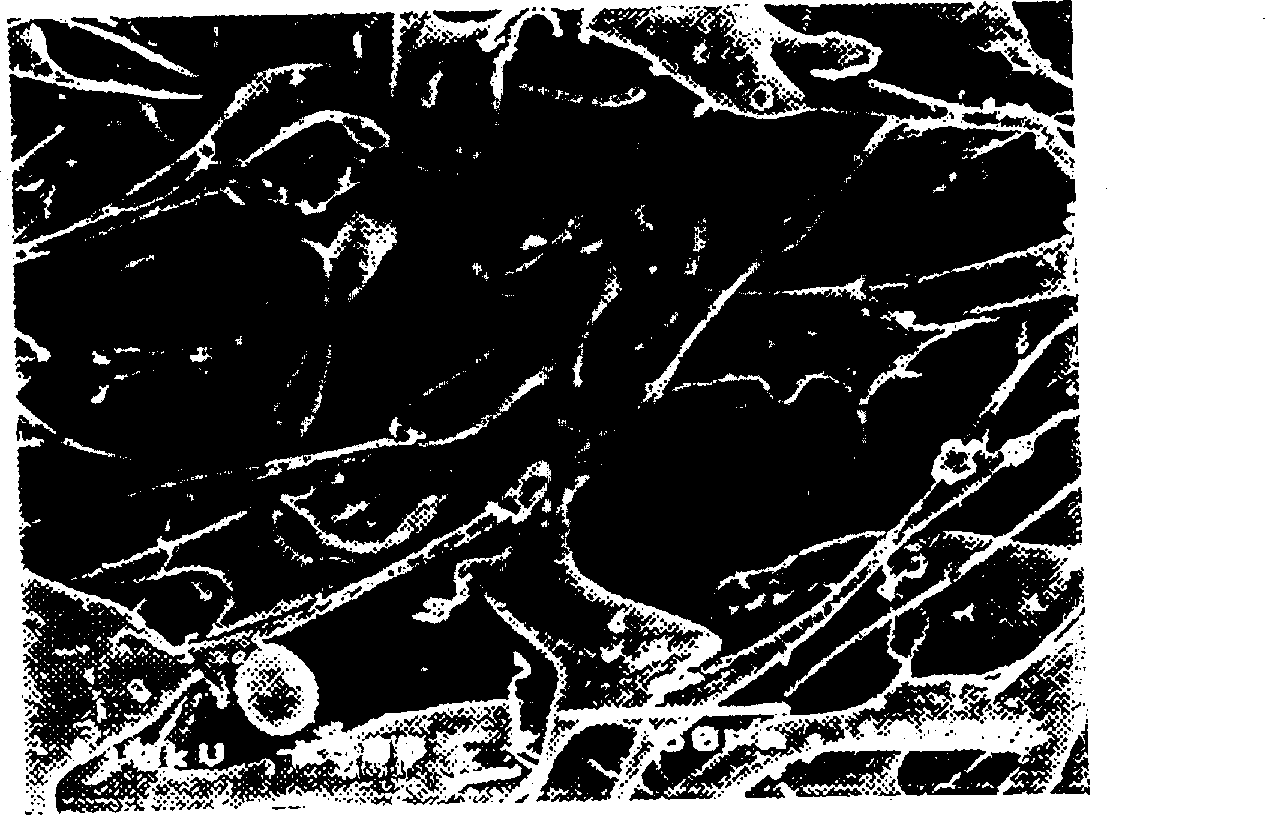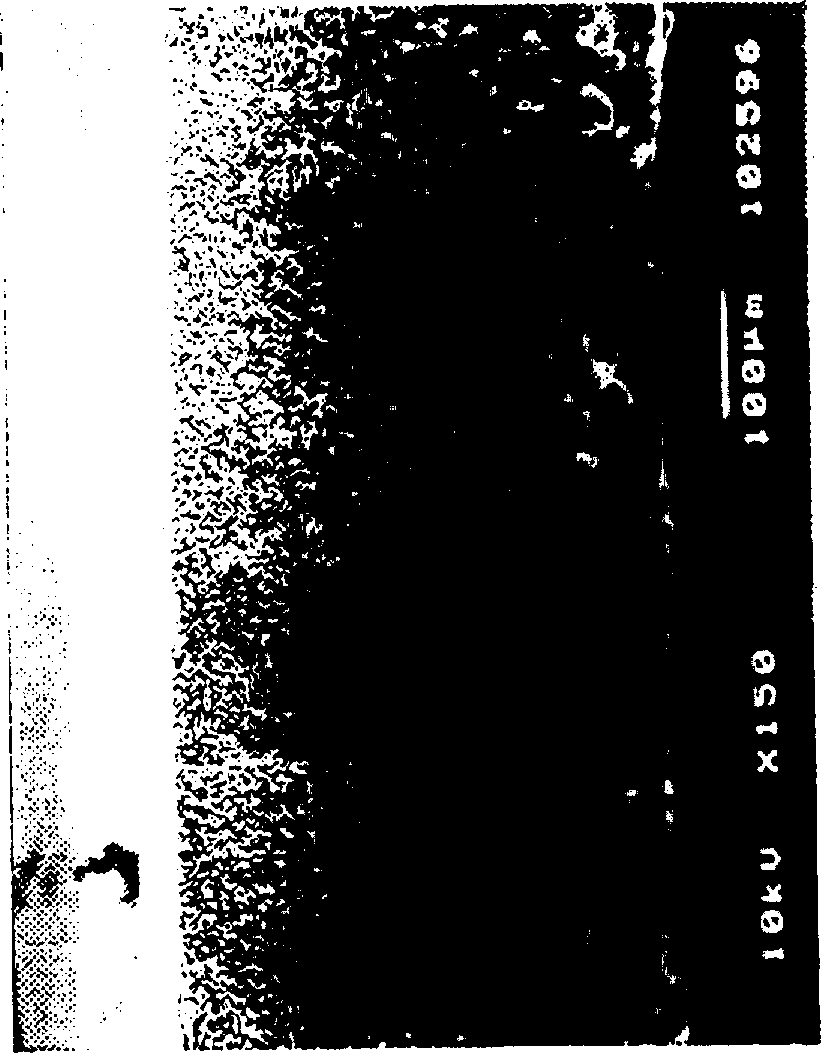Highly asymmetric, hydrophilic, microfiltration membranes having large pore
An asymmetric, microporous technology, applied in filtration separation, membrane, membrane technology, etc., can solve problems such as unsuitable for asymmetric membrane applications
- Summary
- Abstract
- Description
- Claims
- Application Information
AI Technical Summary
Problems solved by technology
Method used
Image
Examples
Embodiment 1
[0110] A homogeneous casting solution was prepared using 9.3% polysulfone polymer (Udel 3500), 19% polyethylene glycol (MW200), 4.3% polyvinylpyrrolidone, 1.8% water, and 65.6% N-methylpyrrolidone. The casting solution was stored at room temperature about 25°C. The casting surface was a moving polyethylene coated paper tape with a 24 mil knife slit. After casting, the casting material was exposed to humid air (relative humidity 65-70%) for 6 seconds, and then quenched in a water bath at a temperature of 40 to 45°C.
[0111] After quenching, the membrane was removed, washed with deionized water, and dried in an oven at about 100°C. Afterwards, the membranes were tested for water flow and average flow pore size. Water flow through the membrane was measured at 10 psid in a standard 47mm disc holder, and a Coulter porometer was used to measure the average flow pore size. The membrane is shown in Figure 1 and has the following properties:
[0112] Water flow (ml / min / 9....
Embodiment 2
[0114] A homogeneous casting solution was prepared using 9.3% polysulfone polymer (Udel 3500), 19% polyethylene glycol (MW200), 4.3% polyvinylpyrrolidone, 1.8% water, and 65.6% N-methylpyrrolidone. The casting solution was stored at room temperature about 25°C. The casting surface was a moving polyethylene coated paper tape with a 19 mil knife gap. After casting, the casting material was exposed to humid air (relative humidity 65-70%) for 9 seconds, and then quenched in a water bath at a temperature of 40 to 45°C.
[0115] After quenching, the membrane was removed, washed with deionized water, and dried in an oven at 100°C. Afterwards, the membranes were tested for water flow and average flow pore size. Water flow through the membrane was measured at 10 psid in a standard 47mm disc holder, and a Coulter porometer was used to measure the average flow pore size. The membrane is shown in Figure 2 and has the following properties:
[0116] Water flow (ml / min / 9.5cm 2 ...
Embodiment 3-6
[0118] Effect of Exposure Time and Humidity
[0119] The method of Example 1 was repeated, except that the exposure time and relative humidity were changed according to Table V. The effect of the changes on the prepared membranes is indicated.
[0120] Example
PUM
| Property | Measurement | Unit |
|---|---|---|
| diameter | aaaaa | aaaaa |
| thickness | aaaaa | aaaaa |
| size | aaaaa | aaaaa |
Abstract
Description
Claims
Application Information
 Login to View More
Login to View More - R&D
- Intellectual Property
- Life Sciences
- Materials
- Tech Scout
- Unparalleled Data Quality
- Higher Quality Content
- 60% Fewer Hallucinations
Browse by: Latest US Patents, China's latest patents, Technical Efficacy Thesaurus, Application Domain, Technology Topic, Popular Technical Reports.
© 2025 PatSnap. All rights reserved.Legal|Privacy policy|Modern Slavery Act Transparency Statement|Sitemap|About US| Contact US: help@patsnap.com



